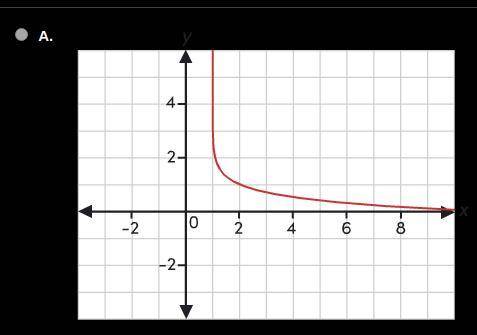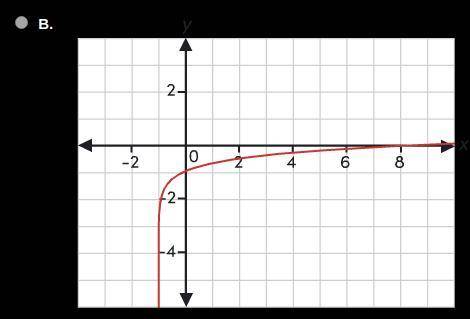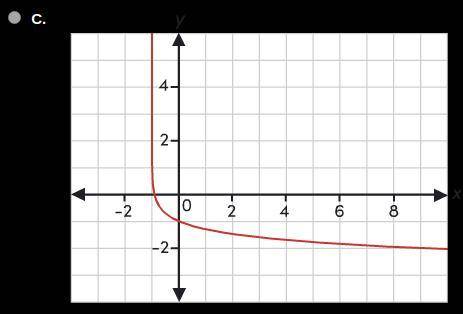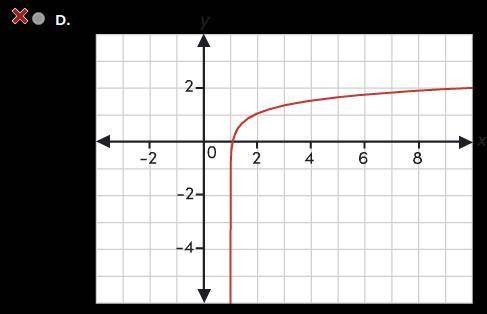
Mathematics, 24.02.2021 21:30 hilljade45
Which graph represents the function f(x) = -log(x - 1) + 1? HINT: It's not D. ANSWERS BELOW





Answers: 3


Another question on Mathematics

Mathematics, 21.06.2019 15:20
The speed of a falling object increases at a constant rate as time increases since the object was dropped. which graph could represent the relationship betweent time in seconds, and s, speed in meters per second? speed of a falling object object over time
Answers: 1

Mathematics, 21.06.2019 18:00
Stephen thublin invests $1,000,000 in a 45-day certificate of deposit with 6.55% interest. what is the total interest income from the investment?
Answers: 1

Mathematics, 21.06.2019 21:30
In a two-digit number the units' digit is 7 more than the tens' digit. the number with digits reversed is three times as large as the sum of the original number and the two digits. find the number.
Answers: 2

Mathematics, 21.06.2019 22:00
Manuela claims that and are congruent. which statement best describes her claim? she is incorrect because the segments do not have the same orientation. she is incorrect because the segments do not have the same length. she is correct because the segments have the same length. she is correct because the segments have the same orientation.
Answers: 1
You know the right answer?
Which graph represents the function f(x) = -log(x - 1) + 1? HINT: It's not D. ANSWERS BELOW
Questions


French, 04.06.2021 01:00

Mathematics, 04.06.2021 01:00

Mathematics, 04.06.2021 01:00






Mathematics, 04.06.2021 01:00


Mathematics, 04.06.2021 01:00



Mathematics, 04.06.2021 01:00

Mathematics, 04.06.2021 01:00






